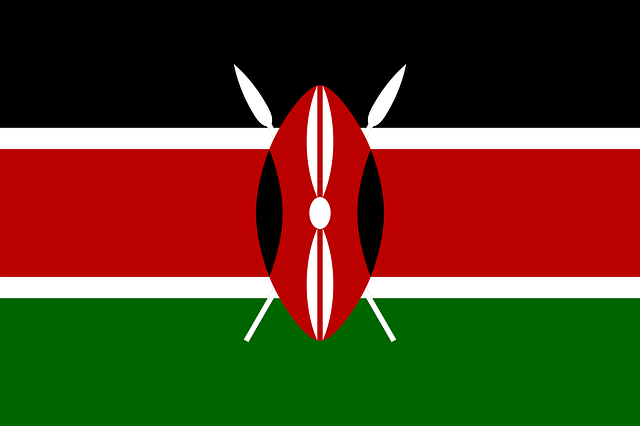The Republic of Kenya
Total Population
47,564,000 (2019 Ethnologue)
Deaf Population
6,000
Nation's Official Language
English, Swahili
Other Languages
The number of established languages listed in Ethnologue is 69. Some of these are:
- Arabic
- Borana
- Bukusu
- Chidigo
- Chiduruma
- Chinese
- Daasanach
- Dholuo
- Ekegusii
- Ganda
- Garre
- Gujarati
- Kamba
- Kiembu
- Kigiryama
- Kipsigis
- Lulogooli
- Lutachoni
- Maasai
- Maay
- Nandi
- Okiek
- Olumarama
- Samburu
- Somali
- Suba
- Terik
- Turkana
Name of Sign Language
Kenya Sign Language
Overview Of Deaf Community And Education
The first school was Aga Khan founded in Mombasa in 1958. Mumias School for the Deaf and Nyangoma School for the deaf were established by the Catholic church in 1961, and the Kambui School for the Deaf started by the Presbyterian Church of East Africa (PCEA) in 1963. The Tumu Tumu School for the Deaf was established by the PCEA in 1970, the Methodist Church also started Kaaga School for the Deaf, and the Anglican Church started Maseno School for the Deaf. The Kapsabet School for the Deaf was started by the African Inland Church. All these were started before Andrew Foster visited Kenya for the first time in the 1980s while on transit to Nigeria but did not found any schools.
Prof Michael Ndurumo introduced the use of signing in schools in the early 1980s, mostly in the form of Simultaneous Communication..
KSL is used as a medium of instruction in Kenyan schools and has been a subject taught and examined since 2010.
The Nyang’oma School for the Deaf and St Martin's Primary School for the Deaf at Mumias were founded around 1962 and many schools have emerged since then. Although KSL is the dominant language for culturally Deaf adults and children, there is an increasing influence of Signed Exact English (SEE) based on ASL in the schools. Teachers have adopted Glossed English as a form of writing KSL. Deaf children are also being mainstreamed
The Kenya Society for Deaf Children (KSDC) started in 1958. There have been several pioneers in deaf education from within Kenya itself.
There are plans to introduce courses in KSL at University of Nairobi, St. Paul’s University and Technical University of Kenya discussions on curriculum and implementation are at advanced stages. Courses are also available from the National Association of the Deaf, KSL Research Project at University, and several churches and associations to learn KSL to certificate level.
School materials have been developed by the US Peace Corps and the Kenya Institute of Special Education (KISE), e.g., Warnke et al. (2007). Signs have been collected to be used in the school curriculum but these are mostly based on SEE (based on the ASL lexicon) or on other SLs to help teach concepts in schools. The database of filmed signs is available but has not been edited or made into accessible format. There appear to be few KSL ‘original’ signs in this material. KSL has been used for a bible translation.
Sign Language Overview
Morgan et al. (2015) have published a quite detailed description of KSL and its situation. There are apparently many different dictionaries for KSL. The first was made in 1991 followed by another in 2001. The US Peace Corps developed the Kenyan Sign Language interactive CD-ROM dictionary in 2004 and 2010. In 2011 a hardback dictionary was published alongside other digital versions, including apps.
Variation of KSL is mainly associated with schools and regions. There are some dialect differences between Kisumu (Western Kenya) and Mombasa (Eastern Kenya) (Kimani, 2012). Morgan et al. (2015) report the greatest variation being between Nairobi and the rest of the country. In a comparison of the lexicon, there appears to less influence from ASL than previously thought and certainly little in grammar. A number of other languages have been used for instruction in Kenya: Flemish Sign Language (in one school only), British Sign Language (in one school only), American Sign Language, KIE Signed English, and even Korean Sign Language. Interestingly several of the neighboring countries are able to follow KSL: for example Uganda, Rwanda, Burundi and South Sudan. There is a small amount of research being conducted in the KSL Research Project at the University of Nairobi.
Although KSL was mentioned in the Kenyan Constitution of 2009, it has not been officially recognized. Because a great emphasis is placed on the use of English in education in general, the increasing use of Glossed English and SEE in the schools for the Deaf is reducing the use of KSL. A good example is the loss of traditional Sign Names to Initialized Sign Names by the younger generation and hearing users of the language.
According to the Bickford et al.’s (2014) categories, Kenyan Sign language is assessed to be developing by Ethnologue but it can also be seen as threatened since children are having increasingly fewer opportunities to learn KSL.
Deaf Organizations In Country
- Kenyan National Association of the Deaf (KNAD)
- Kenyan Sign Language Interpreters Association (KSLIA)
Overview of Interpreting Services
Sign language interpreters are available, but they have not been officially trained. There are no accreditation courses or a certification /Interpreter training programs at university level. Regular news bulletins are interpreted at 7PM and 9PM on two television stations – one state owned and the other privately owned. The parliamentary proceedings are interpreted when televised. A few religious programs are also interpreted. There are no programs for the Deaf and captioning services are not available.
Medical information is limited. Only the Polio vaccination campaign has been interpreted. There are posters on Ebola, TB and HIV produced with some KSL illustrations. The Sahaya.org HIV/AIDS education program uses KSL.
Sign Language Resources In The Country
Resources
List of Contributors
Jack Owiti, Eyasu Hailu Tamene



